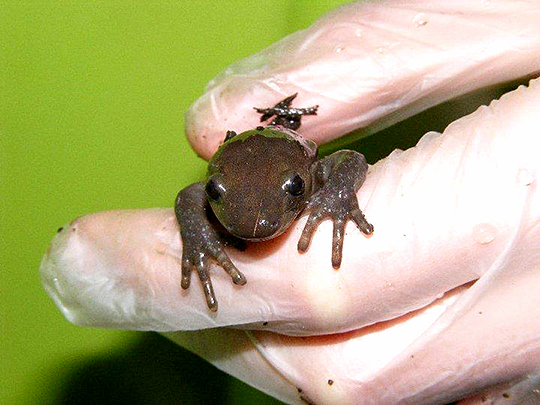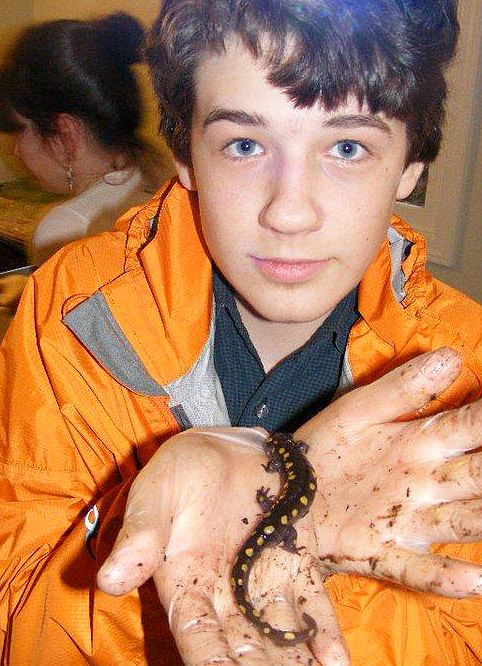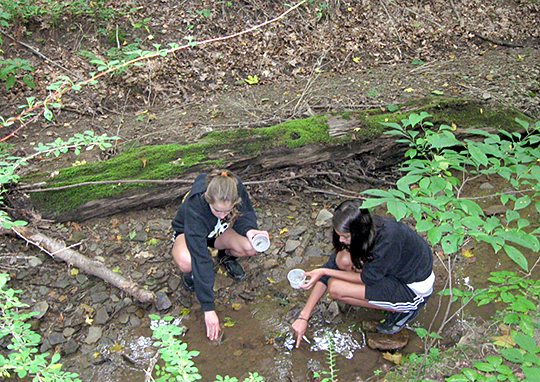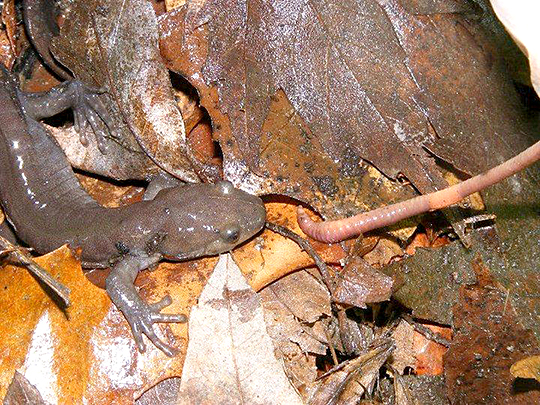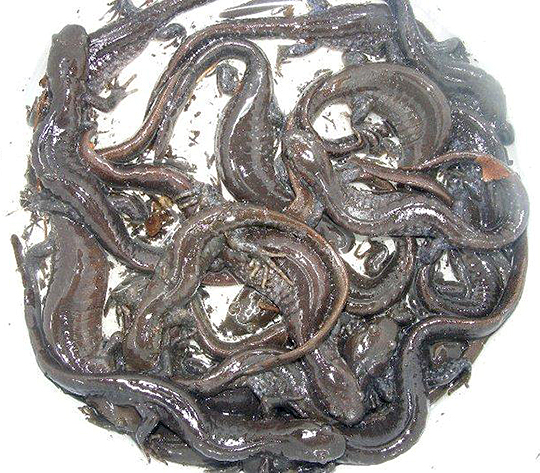- Coloration: black with iridescent blue spots which intensify during mating
- Size: up to 4-5 inches when mature
- Length of life: 10-25 years
- Habitat: As an adult- in underground burrows in an upland deciduous forest. As a developing egg and salamander- in vernal ponds from Feb-August
- Breeding: one third of an amphibian population migrates each year to mate, returning to the same water source which lies within 1,000 feet of their burrows.
Habitat Restoration Project Timeline:
- Spring 2008- blocked off sewage treatment tanks, opened first “safe pond”
- Spring 2009 migration- Jefferson salamanders- 13 males/15 females
- Fall, 2009- installed pond fencing and pit traps to capture and mark salamanders
- Spring, 2010 migration: Jefferson salamanders- 47 males/ 101 females
- Fall, 2010- QV Creekers installed a second cattle tank as a “safe pond”
- Spring, 2011 migration: Jefferson salamanders- 42 males/ 55 females
- Fall, 2011- second cattle tank was replaced
- Spring, 2012 migration: 149 Jefferson salamanders- 149 males/ females and 6 spotted salamanders
- Fall, 2012- observation trails alongside the two ponds were constructed
- Spring, 2013 Migration
- 46 Males
- 55 Females
- 3 Juveniles
- 43 Recaptures
In 2012, the QV Creekers began working with Dr. Catie Hanna of Robert Morris University’s Biology Department to conduct more intensive studies of the Jefferson salamander population. Breeding salamanders captured in the pit traps around the two tanks are marked to establish estimates of population growth, weight gain or loss and number of breeding migrations per specific salamander.
Currently, the state of Pennsylvania’s Fish and Game Commission considers the Jefferson salamander a “species of interest;” but not yet “endangered.”

